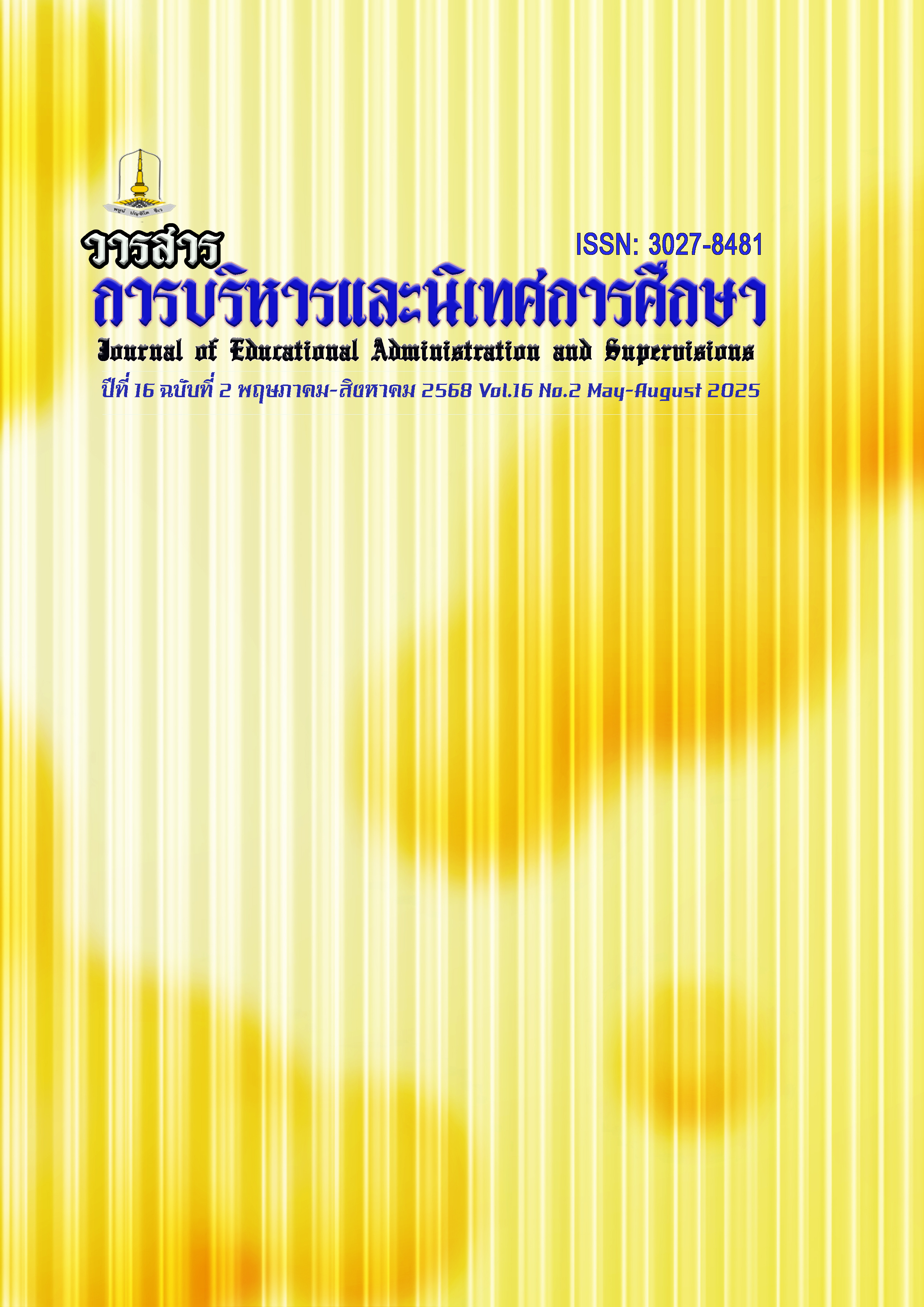Guidelines for Applying Design Thinking in Developing a Growth Mindset of Teachers in District Learning Encouragement Center: A Case Study
Main Article Content
Abstract
This research aimed to analyze guidelines for developing a growth mindset among teachers and to examine the effects of applying design thinking to develop the teachers’capacity. A participatory action research approach was employed. The target group was 8 teachers and educational personnel who were the entire staff of the District Learning
Encouragement Center and voluntarily participated in the study. The research was conducted with transparency and with a strong emphasis on voluntary participation. Qualitative tools
were developed based on the concepts of Stanford d.school and Lewrick et al., encompassing five stages including: Empathize (using Empathy Map and User Profile), Define (using Vision Cone), Ideate (using 2x2 Matrix), Prototype (using MVP activity) and Test (using Feedback Capture Grid). Data were collected through the PAOR process: Plan (developing a design thinking manual and activity), Act (conducting the activity), Observe (noting responses and behaviors), and Reflect (providing feedback and validating results), over one cycle lasting two month. Content analysis was employed for data interpretation.
The findings indicated that design thinking effectively promoted teachers’ growth mindset, particularly in enhancing intrinsic motivation, embracing challenges, and learning from mistakes. The activities raised teachers' self-awareness, fostered flexible mindsets, and enhanced adaptability to changing contexts. The approach emphasized genuine participation and the creation of psychologically safe spaces, contributing to sustainable behavioral transformation and growth mindset development.
Downloads
Article Details

This work is licensed under a Creative Commons Attribution-NonCommercial-NoDerivatives 4.0 International License.
References
วีีระยุทธ์ ชาตะกาญจน์. (2558). การวิจัยเชิงปฏิบัติการ. วารสารราชภัฏสุราษฎร์ธานี, 2(1), 29–49. https://e-journal.sru.ac.th/index.php/srj/article/view/241
สำนักงานเลขาธิการสภาการศึกษา. (2560). รายงานผลการประเมินตนเองของประเทศไทยตามเป้าหมายการพัฒนาที่ยั่งยืนด้านการศึกษา (SDG4). กระทรวงศึกษาธิการ.
อัญชิสา เหมทานนท์, วรรณวิศา สืบนุสรณ์ คล้ายจำแลง, & สุดารัตน์ สารสว่าง. (2563). แนวทางการประยุกต์ใช้การคิดเชิงออกแบบในการพัฒนากรอบความคิดเชิงออกแบบของครู: กรณีศึกษาครูสังกัดสำนักงานเขตพื้นที่การศึกษามัธยมศึกษา เขต 2 [รายงานการวิจัย]. มหาวิทยาลัยเกษตรศาสตร์. https://edad.edu.ku.ac.th/Thesis%20IS%2026/14%20%20Anchisa%20Hemtanon.pdf
Brown, T. (2008). Design thinking. Harvard Business Review, 86(6), 84–92. https://readings.design/PDF/Tim%20Brown,%20Design%20Thinking.pdf
Dweck, C. S. (2006). Mindset: The new psychology of success. Random House.
IDEO. (2009). Human-centered design toolkit. IDEO.
Kemmis, S., & McTaggart, R. (1988). The action research planner. Deakin University.
Lewrick, M., Link, P., & Leifer, L. (2020). The design thinking toolbox: A guide to mastering the most popular and valuable innovation methods. Wiley.
Matthews, J. H., & Wrigley, C. (2017). Design and design thinking in business and management higher education. Journal of Learning Design, 10(1), 41–54. https://www.researchgate.net/publication/312184607_Design_and_Design_Thinking_in_Business_and_Management_Higher_Education
Stanford d.school. (2009). Design thinking bootcamp bootleg. https://dschool.stanford.edu/tools/design-thinking-bootleg
UNESCO. (2015). Rethinking education: Towards a global common good? https://unesdoc.unesco.org/ark:/48223/pf000023255


